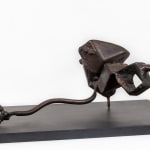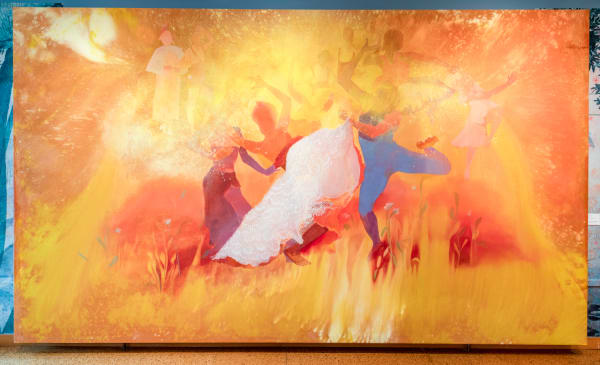Richard Hunt USA, b. 1935
Organic Construction, Number 5, 1960
Welded Steel with Bronze
Note: steel plate as plinth is optional
Note: steel plate as plinth is optional
8 1/2 x 22 x 14 1/2 in
21.6 x 55.9 x 36.8 cm
21.6 x 55.9 x 36.8 cm
7231
ARCHIVE WORKS - Kavi Gupta Collection
Further images
-
(View a larger image of thumbnail 1
)

-
(View a larger image of thumbnail 2
)

-
(View a larger image of thumbnail 3
)

-
(View a larger image of thumbnail 4
)

-
(View a larger image of thumbnail 5
)

-
(View a larger image of thumbnail 6
)

-
(View a larger image of thumbnail 7
)

-
(View a larger image of thumbnail 8
)

-
(View a larger image of thumbnail 9
)

Born near the infamous steel yards on the South Side of Chicago in 1935, Richard Hunt was delivered into a world of metal. As a young artist studying at the...
Born near the infamous steel yards on the South Side of Chicago in 1935, Richard Hunt was delivered into a world of metal. As a young artist studying at the School of the Art Institute of Chicago in the 1950s, he perceived a Surrealist dreamworld lurking in the junkyards of Midwestern America. The cast-off, metal skeletons of the Steel Age—even then beginning to corrode in heaps across the rust belt—became lifelike abstractions in his hands, perfectly expressing the beauty and terror of a rapidly changing, mid-20th Century American Dream.
By the time Hunt graduated from SAIC in 1957, his work had already been exhibited by MoMA, a testament to his strikingly personal language of lyrical abstraction, mature beyond his years. Though he was comfortable working with a range of materials, including found objects, wood and steel, a fellowship that allowed him to travel through reconstructed Europe in 1958 convinced him that metal epitomized the spirit of the Modern World.
After returning from Europe, Hunt enlisted in the US Army, serving two years during the early period of the Vietnam War. The uncanny, eerily human forms that dominate his works from this time express the strange marriage Hunt saw evolving between nature and modern machines. A series of untitled drawings from 1959 portray assemblages of dismembered, bonelike forms floating amidst washed out landscapes. The steel sculpture Forms with Moving Line (1960), made the year Hunt finished his Army tour, suggests a dark, creeping hybridity; not only is this landmark early work alarming in its multitudinous visual presence, its title boldly evokes both military lingo and formalist abstraction.
By the time Hunt graduated from SAIC in 1957, his work had already been exhibited by MoMA, a testament to his strikingly personal language of lyrical abstraction, mature beyond his years. Though he was comfortable working with a range of materials, including found objects, wood and steel, a fellowship that allowed him to travel through reconstructed Europe in 1958 convinced him that metal epitomized the spirit of the Modern World.
After returning from Europe, Hunt enlisted in the US Army, serving two years during the early period of the Vietnam War. The uncanny, eerily human forms that dominate his works from this time express the strange marriage Hunt saw evolving between nature and modern machines. A series of untitled drawings from 1959 portray assemblages of dismembered, bonelike forms floating amidst washed out landscapes. The steel sculpture Forms with Moving Line (1960), made the year Hunt finished his Army tour, suggests a dark, creeping hybridity; not only is this landmark early work alarming in its multitudinous visual presence, its title boldly evokes both military lingo and formalist abstraction.
Provenance
B.C. Holland Gallery, ChicagoAcquired by Kavi Gupta gallery 2019
Share
- X
- Tumblr









